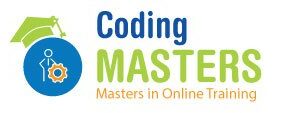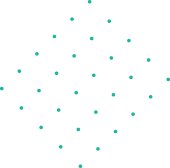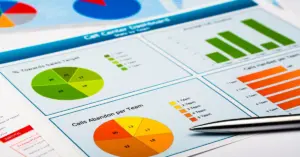Data is the backbone of data science. The success of any data-driven project depends on how well data is collected, acquired, and prepared for analysis. In this blog, we will explore the importance of data collection and acquisition, the methods used, the steps involved, and the popular tools that make the process efficient and reliable. Coding Masters, the Best online data science classes in Hyderabad will provide assistance in understanding and getting the deep knowledge on data science by Subba Raju Sir.
Best online data science classes in Hyderabad
Data collection and acquisition are crucial steps in data science as they ensure the availability of accurate, relevant, and high-quality data. Poor data collection can lead to incorrect insights, flawed models, and inaccurate decision-making. Proper data acquisition helps in:
- Enhancing model accuracy
- Reducing biases
- Improving decision-making
- Gaining deeper insights
Steps Involved in Data Collection by Subba Raju Sir
- Define the Objective: Before collecting data, it is crucial to determine the objective of the data collection process. Clearly identifying the purpose and the specific insights required helps in selecting appropriate data sources and collection methods.
- Identify Data Sources: Based on the project requirements, data sources should be identified. These can be categorized into primary (collected firsthand) and secondary (obtained from existing sources) data sources.
- Select Data Collection Method: Depending on the nature of the data and its availability, different collection methods can be chosen, such as surveys, web scraping, APIs, or retrieving data from databases.
- Data Extraction and Storage: Once the method is selected, data extraction is performed using tools and technologies like web scraping frameworks, database queries, or API calls. The collected data is then stored securely in databases, cloud storage, or data warehouses.
- Data Cleaning and Processing: Raw data often contains inconsistencies, missing values, and duplicates. Data cleaning involves preprocessing steps such as:
- Removing duplicate records
- Handling missing values through imputation
- Standardizing data formats
- Filtering out irrelevant information
- Data Validation: To ensure data integrity, validation techniques are applied. This involves checking for errors, verifying data accuracy, and ensuring consistency in datasets before analysis.
- Data Integration: Often, data is collected from multiple sources, and integrating them into a unified dataset is necessary. Techniques like data merging, transformation, and deduplication help create a structured and comprehensive dataset.
- Data Analysis and Preparation: After data is collected and cleaned, it is prepared for further analysis. This involves exploratory data analysis (EDA), feature engineering, and formatting the data to fit the chosen machine learning or statistical models.
Methods of Data Collection in data science
Data collection and acquisition can be categorized into the following methods:
1. Primary Data Collection
This involves gathering raw data directly from sources. Common techniques include:
- Surveys and Questionnaires: Collecting responses from individuals using Google Forms, Typeform, or SurveyMonkey.
- Interviews: Conducting one-on-one discussions to extract qualitative data.
- Sensors and IoT Devices: Capturing real-time data through smart sensors.
- Web Scraping: Extracting data from websites using tools like BeautifulSoup and Scrapy.
2. Secondary Data Collection
This involves acquiring data from existing sources such as:
- Public Datasets: Using datasets from Kaggle, UCI Machine Learning Repository, and government portals.
- APIs: Fetching data from services like Twitter API, Google Maps API, and OpenWeatherMap API.
- Databases: Accessing structured data from SQL databases like MySQL and PostgreSQL.
- Data Warehouses: Extracting information from platforms like Amazon Redshift and Google BigQuery.
Tools for Data Collection and Acquisition
Several tools are used in data science to collect and acquire data efficiently. Here are some of the most popular ones:
1. Web Scraping Tools
- BeautifulSoup: A Python library used for parsing HTML and XML documents.
- Scrapy: A powerful framework for web scraping and crawling.
- Selenium: A browser automation tool used for extracting dynamic web content.
2. APIs and Data Extraction Tools
- Postman: A tool for testing and managing API requests.
- RapidAPI: A marketplace for accessing various APIs.
- OpenRefine: A tool for cleaning and transforming acquired data.
3. Database and Storage Tools
- SQL Databases: MySQL, PostgreSQL, and SQLite for structured data storage.
- NoSQL Databases: MongoDB and Firebase for unstructured data.
- Cloud Storage: Google Drive, AWS S3, and Azure Blob Storage for scalable data storage.
4. Data Collection Platforms
- Google Forms & Typeform: For collecting survey-based data.
- Microsoft Power Automate: For automating data collection workflows.
- Apache Kafka: For real-time data streaming.
Challenges in Data Collection and Acquisition
While collecting data is essential, it comes with challenges such as:
- Data Quality Issues: Inconsistent, missing, or duplicate data.
- Legal and Ethical Concerns: Compliance with data protection regulations like GDPR and CCPA.
- Scalability: Handling large volumes of data efficiently.
- Access Restrictions: Limited access to proprietary datasets.
Conclusion
Data collection and acquisition play a fundamental role in data science, determining the quality and effectiveness of analytical models. Leveraging the right tools and methods ensures the data is accurate, relevant, and structured for further analysis. Whether it is web scraping, API integration, or using databases, selecting the appropriate data acquisition technique can significantly impact the success of a data-driven project.
For aspiring data scientists, mastering data collection tools and techniques is essential to harness the power of data for insightful decision-making. If you are looking for the Best online data science classes in Hyderabad, Subba Raju Sir offers expert guidance to help you excel in data science. Stay ahead in the data game by continuously exploring new tools and methodologies!
FAQ’s on Data collection in Data Science
- What is data collection in data science?
Data collection is the process of gathering, measuring, and storing data from various sources for analysis and decision-making. - Why is data acquisition important in data science?
Data acquisition ensures that accurate and relevant data is available for creating reliable machine learning models and data-driven insights. - What are the primary methods of data collection?
The primary methods include surveys, interviews, web scraping, sensor data, and API - What is the difference between primary and secondary data collection?
Primary data is collected firsthand (e.g., surveys), while secondary data is obtained from existing sources (e.g., databases, APIs). - What tools are used for web scraping?
Popular tools include BeautifulSoup, Scrapy, and Selenium for extracting data from websites. - What are some common data collection challenges?
Challenges include data quality issues, missing values, access restrictions, and legal compliance. - What is data cleaning in the data collection process?
Data cleaning involves handling missing values, removing duplicates, and standardizing data formats. - How do APIs help in data acquisition?
APIs allow seamless extraction of data from online services like Google Maps, Twitter, and OpenWeatherMap. - Which databases are commonly used for storing collected data?
SQL databases (MySQL, PostgreSQL) and NoSQL databases (MongoDB, Firebase) are widely used. - What are the ethical considerations in data collection?
Ensuring user privacy, obtaining consent, and complying with data protection laws like GDPR and CCPA. - How does cloud storage help in data acquisition?
Cloud platforms like AWS S3, Google Drive, and Azure Blob Storage offer scalable and secure data storage. - What is real-time data collection?
Real-time data collection involves capturing live data from sources like IoT devices, stock markets, and online transactions. - Why is data validation crucial in data acquisition?
Data validation ensures accuracy, consistency, and integrity before using the data for analysis. - What is the role of ETL in data acquisition?
ETL (Extract, Transform, Load) processes help in extracting raw data, transforming it into a usable format, and loading it into storage. - What is the significance of metadata in data collection?
Metadata provides essential details about data sources, formats, and quality, aiding in data organization. - Which industries rely heavily on data collection?
Industries such as healthcare, finance, marketing, e-commerce, and artificial intelligence depend on robust data collection methods. - How do machine learning models benefit from high-quality data collection?
Clean and relevant data improves model accuracy, reduces bias, and enhances predictive performance. - What role does Subba Raju Sir play in data science education?
Subba Raju Sir provides expert training in data science, covering data collection techniques in the Best online data science classes in Hyderabad. - What is the importance of exploratory data analysis (EDA) in data acquisition?
EDA helps in understanding data distribution, patterns, and anomalies before applying machine learning models. - Where can I learn more about data collection techniques?
You can join the Best online data science classes in Hyderabad, guided by Subba Raju Sir, to gain hands-on experience in data collection tools and methods.


